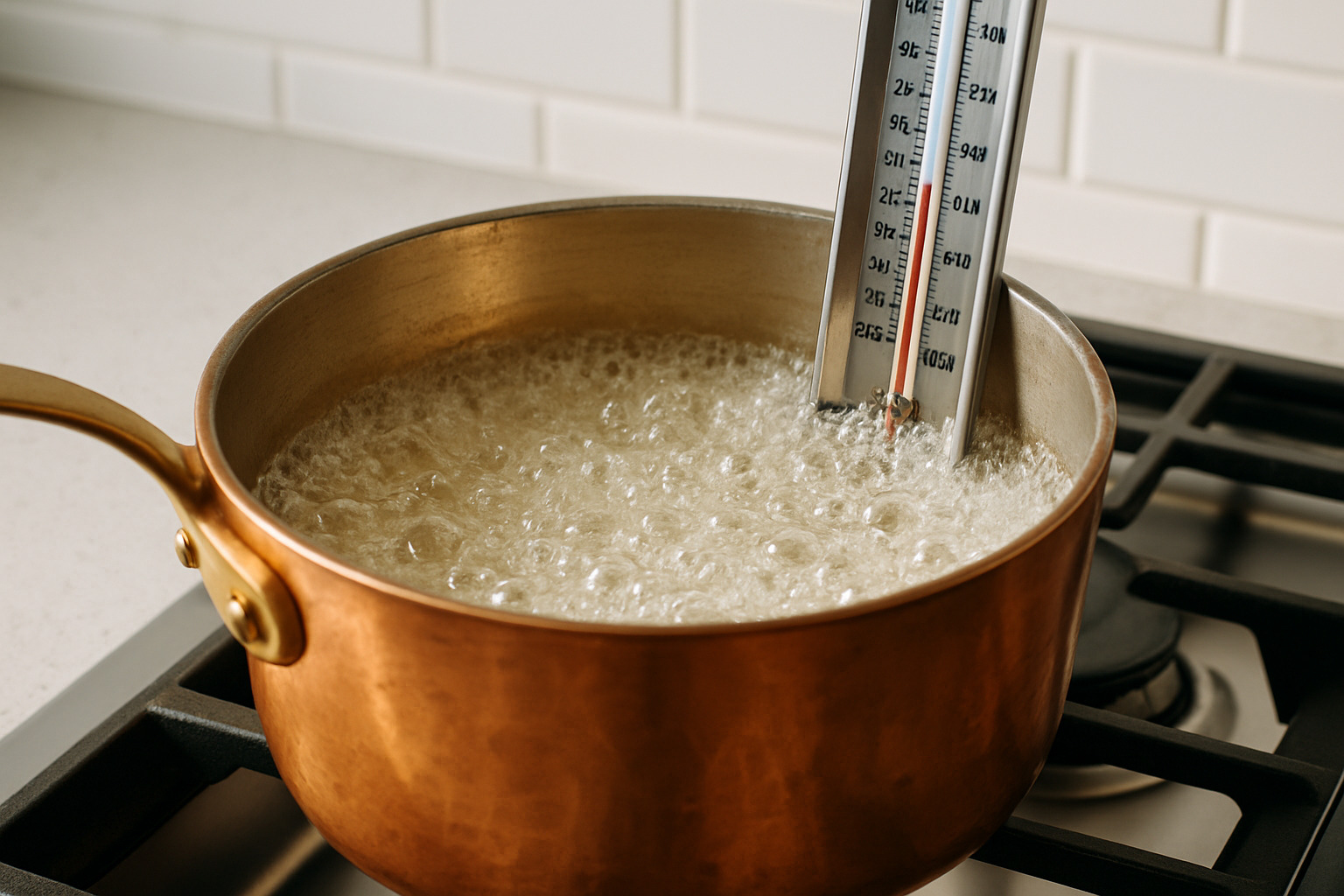What Makes Turkish Delight a Timeless Sweet Treasure
Turkish delight is a soft, chewy confection made from sugar, starch, and water, traditionally flavored with rosewater and dusted with powdered sugar. Also known as lokum, this Ottoman-era treat has captivated sweet lovers for over 240 years with its delicate texture and aromatic flavors.
Quick Turkish Delight Facts:
- Main ingredients: Sugar, cornstarch, water, flavorings (rosewater, citrus, mastic)
- Texture: Soft, gel-like, chewy consistency
- Origins: Late 18th-century Ottoman Empire (Istanbul)
- Popular flavors: Rose, lemon, orange, pistachio, pomegranate
- Cultural role: Symbol of hospitality, wedding treats, holiday gifts
- Shelf life: Up to 1 month at room temperature
- Calories: 33-97 per piece (depending on size and nuts)
The name lokum comes from the Arabic phrase “rahat-ul hulküm,” meaning “comfort for the throat.” Legend tells of confectioner Ali Muhiddin Hacı Bekir creating this soft alternative in the 1770s when the Ottoman sultan cracked a tooth on hard candy. Whether true or not, Bekir’s family business still operates in Istanbul today.
This delicate sweet gained international fame through C.S. Lewis’s The Chronicles of Narnia, where the White Witch uses enchanted Turkish delight to tempt Edmund. The 2005 film adaptation sparked a notable sales increase worldwide, introducing new generations to this ancient treat.
Turkish delight represents more than just candy – it’s a cultural bridge connecting food lovers to centuries of Ottoman hospitality traditions. From Istanbul’s spice bazaars to modern New York City specialty shops, lokum continues to charm with its perfect balance of sweetness and floral aromatics.

Turkish delight helpful reading:
Turkish Delight Essentials: History, Ingredients & Significance
When you bite into a piece of Turkish delight, you’re tasting over 240 years of culinary history. This beloved confection, known as lokum in Turkish, represents the perfect marriage of simple ingredients and sophisticated technique that has delighted sweet lovers across the Ottoman Empire and beyond.
The magic of Turkish delight lies not just in its delicate rose-scented sweetness, but in how it transformed from a palace treat into a symbol of hospitality that spans continents. Understanding this confection means appreciating both its humble four-ingredient foundation and its role as a cultural ambassador.
History of Turkish Delight
Picture 18th-century Istanbul, where the busy streets filled with the aroma of spices and sweets. Here, confectioner Ali Muhiddin Hacı Bekir was perfecting what would become the world’s most famous Turkish delight recipe in 1777. His small shop in Constantinople would grow into a confectionery empire that still operates today – making it one of the oldest candy companies on Earth.
But here’s where the story gets interesting: Hacı Bekir didn’t exactly invent Turkish delight. Similar honey-based confections existed across the Ottoman territories, from Greece to Iran. What he did was in its own way – he refined the recipe by introducing white sugar and cornstarch instead of the traditional honey and flour. This simple switch created the silky, gel-like texture we know and love today.
The name lokum comes from the Arabic phrase “rahat-ul hulküm,” meaning “comfort for the throat.” Legend says Sultan Abdul Hamid I commissioned Bekir to create a softer sweet after cracking a tooth on hard candy. Whether true or not, the name stuck perfectly.
Turkish delight might have remained a regional specialty if not for a certain British author named C.S. Lewis. When The Lion, the Witch and the Wardrobe hit movie screens in 2005, something magical happened – Turkish delight sales skyrocketed worldwide. Suddenly, everyone wanted to taste Edmund’s temptation. The White Witch’s enchanted sweets introduced an entirely new generation to this ancient treat.
The origins debate continues to simmer between Turkish and Greek communities, with both claiming invention rights. But honestly? The real winner is anyone who gets to enjoy this delicate confection, regardless of which flag flies over its birthplace.
Main Ingredients of Turkish Delight
The beauty of Turkish delight lies in its deceptive simplicity. Just four basic ingredients create that distinctive bouncy texture that makes your taste buds dance. Yet like many seemingly simple things, the magic happens in the details.
Your foundation starts with sugar – lots of it. A typical batch uses about four cups of granulated sugar, which forms the sweet backbone of every piece. Next comes cornstarch, roughly 1.25 cups, which creates that signature gel-like structure. Add water to bind everything together (about 4.5 cups total), and a splash of citric acid or lemon juice to prevent crystallization.
But here’s where Turkish delight gets its personality – the flavorings. Rosewater remains the classic choice, though you’ll want to start light since too much can taste soapy. Mastic, a pine-scented resin from Greek islands, adds an intriguing complexity that’s hard to describe but impossible to forget. Orange blossom water brings floral brightness, while bergamot or lemon extract add citrusy zing.
Premium versions get studded with pistachios, hazelnuts, or walnuts – those gorgeous green, brown, and tan gems that make each bite a little treasure hunt. The nuts aren’t just decoration; they add richness and texture that lifts the entire experience.
The real secret lies in precise temperature control. That sugar syrup must hit exactly 240-250°F (the hard-ball stage in candy-making terms), while the cornstarch mixture needs careful whisking to prevent lumps. This scientific precision explains why homemade attempts often turn into sticky disasters – candy making doesn’t forgive shortcuts.
Cultural Significance & Pop Icons
Turkish delight isn’t just candy – it’s a cultural handshake wrapped in powdered sugar. In Turkish tradition, offering lokum to guests shows the highest respect and hospitality. The ritual often includes the phrase “Afiyet Olsun,” meaning “may it bring you health,” changing a simple sweet into a blessing.
Walk into any Turkish home during weddings and you’ll find towers of beautifully arranged Turkish delight. During Eid al-Fitr and Eid al-Adha, families exchange elaborately boxed lokum as gifts. The confection pairs perfectly with Turkish coffee, where the sweet balances the bitter intensity of the dark brew. Even business meetings begin with offering Turkish delight – it’s a edible olive branch that sets a friendly tone.
The sweet’s pop culture influence stretches far beyond Edmund’s Narnia trip. Fry’s Turkish Delight, a chocolate-covered version created in 1914, became a British staple (though we won’t name names). Canada’s Big Turk bar features a vibrant magenta lokum center wrapped in milk chocolate, proving this Ottoman treat adapts beautifully to modern tastes.
Cyprus earned special recognition when its Loukoumi Geroskipou received Protected Geographical Indication status from the EU in 2007. This prestigious designation acknowledges the unique local production methods and quality standards maintained in Yeroskipou, cementing the region’s reputation for exceptional Turkish delight.
Scientific research on confectionery history reveals how Turkish delight influenced modern candy development, particularly inspiring the chewy centers found in jelly beans and other gummy confections. From Ottoman palaces to New York City specialty shops, this humble sweet continues building bridges between cultures, one rose-scented bite at a time.
Crafting the Perfect Batch: Traditional & Modern Techniques
Making authentic Turkish delight at home might seem intimidating, but understanding the process makes it surprisingly achievable. The secret lies in mastering two simple techniques: creating the perfect sugar syrup and incorporating starch without lumps. Once you understand these fundamentals, you’ll be stirring your way to lokum success.

The traditional method hasn’t changed much since Hacı Bekir’s time. Turkish artisans still use copper pots for their superior heat distribution, though your heavy-bottomed Dutch oven will work beautifully. The key difference between homemade and commercial Turkish delight lies in cooking time – factories can maintain precise temperatures for hours, while home cooks need to be more attentive to prevent scorching.
Modern techniques have introduced helpful shortcuts without compromising authenticity. Some contemporary recipes use gelatin instead of traditional soapwort, while others incorporate corn syrup to prevent crystallization. However, purists argue that only the original starch-and-sugar method creates lokum’s distinctive texture.
Step-by-Step Traditional Method
Creating lokum involves a beautiful dance between two mixtures that eventually become one. Think of it as making candy and gravy simultaneously – both require patience and attention to detail.
Start with your sugar syrup preparation by combining 4 cups of granulated sugar with 4.5 cups of water and 1 tablespoon of lemon juice. The lemon juice isn’t for flavor – it’s your insurance against crystallization. Heat this mixture without stirring until it reaches the hard-ball stage at 250°F. This temperature is crucial because anything lower won’t set properly, while higher temperatures create bitter, tooth-breaking candy.
While your syrup heats, prepare the starch slurry by whisking 1.25 cups of cornstarch with 1 cup of cold water until completely smooth. This step determines whether your Turkish delight will be silky or lumpy, so take your time. Gradually add the remaining water, then heat while stirring until the mixture thickens to a paste-like consistency.
The magic happens when these two components unite. Slowly pour the hot syrup into your starch mixture while whisking constantly – imagine you’re tempering eggs for custard. Return everything to medium-low heat and begin the long stirring process. Traditional recipes call for stirring every 7-8 minutes for 1-2 hours until the mixture turns amber and pulls away from the pan sides.
This extended cooking time allows the starch to fully hydrate and the flavors to develop. Add your rosewater, mastic, or other flavorings during the final 10 minutes. Pour into an oiled 9×9 inch pan and let it set and cure for 5-24 hours at room temperature.
Common Mistakes & Fixes
Even experienced candy makers encounter lokum challenges. The most frustrating issue is lumpy texture, which happens when starch gets added too quickly or insufficient whisking occurs. If you spot lumps forming, strain your mixture immediately through a fine mesh sieve. Prevention works better than correction – always pre-mix your starch with cold water and whisk like your reputation depends on it.
Temperature troubles cause the second most common failure. If your Turkish delight won’t set after 24 hours, your syrup likely didn’t reach the hard-ball stage. Unfortunately, there’s no easy fix – you’ll need to start over. Use a reliable candy thermometer and test with the cold-water method: drop a small amount into ice water, and it should form a firm ball.
Sugar crystallization creates grainy, unpleasant texture that ruins the entire batch. This happens when you stir the syrup while heating or leave sugar crystals on the pan sides. Brush the sides with a wet pastry brush and resist the urge to stir until you reach temperature.
Altitude adjustments matter more than most people realize. For every 500 feet above sea level, reduce your target temperature by 1°F. If you’re cooking at high altitude, aim for 244°F instead of 250°F to achieve the same consistency.
Tips for Homemade Turkish Delight
Success with Turkish delight comes down to preparation and patience. Invest in quality equipment: a heavy-bottomed pot prevents hot spots, while a digital candy thermometer eliminates guesswork. Silicone spatulas won’t scratch your pan, and a 9×9 inch silicone pan makes removal effortless.
The cold-water test serves as your backup when thermometers fail. Drop a small amount of your mixture into ice water – properly cooked lokum should hold its shape without dissolving. This technique has guided candy makers for centuries and remains more reliable than any gadget.
Natural coloring creates beautiful results without artificial additives. Beetroot juice produces lovely pink hues, while pomegranate juice creates deep red shades. Turmeric adds golden yellow color, though use sparingly to avoid overwhelming the delicate flavors.
Wear food-safe gloves when handling hot mixtures – lokum reaches temperatures that can cause serious burns. Professional confectioners often describe the stirring process as meditative, requiring the same mindful attention as meditation practice. Accept this slow rhythm rather than rushing the process.
The most important tip? Patience wins every time. Turkish delight rewards those who respect the process and allow each step to develop fully. Your first batch might not match Istanbul’s finest, but each attempt teaches valuable lessons that bring you closer to lokum mastery.
Flavor Spectrum & Regional Variations
The world of Turkish delight extends far beyond the classic rose flavor, encompassing a rainbow of tastes and regional specialties. What started as a simple rosewater confection in Ottoman Istanbul has blossomed into countless variations, each reflecting local ingredients and cultural preferences across continents.

Traditional flavors remain beloved for good reason. Classic rose delivers delicate floral notes that shouldn’t overpower – many first-time makers accidentally create soapy-tasting lokum by adding too much rosewater. Lemon and orange blossom provide bright citrus alternatives, while pomegranate offers a tart-sweet balance with beautiful deep red color.
Mastic resin from Greek islands creates one of the most distinctive traditional flavors. This pine-scented ingredient produces an almost medicinal freshness that locals adore, though it can surprise newcomers. Premium versions often feature pistachio logs – whole or chopped nuts suspended in the gel matrix, with Iranian pistachios commanding the highest prices for their superior flavor and vibrant green color.
Innovative Modern Flavors
Contemporary confectioners push lokum boundaries while respecting traditional techniques. Espresso lokum appeals to coffee lovers, combining Turkey’s famous coffee culture with its signature sweet. The bitter-sweet balance creates sophisticated flavor profiles perfect for after-dinner treats.
Lavender paired with rose creates floral complexity without overwhelming perfume notes. Chili-lime combinations bring unexpected heat balanced with citrus brightness – a fusion that would make Ottoman confectioners raise their eyebrows but delights modern adventurous eaters.
Chocolate-coated versions represent the ultimate indulgence. Premium makers dip traditional lokum in dark or milk chocolate, creating textural contrast between the smooth coating and chewy interior. Fig and walnut combinations celebrate Mediterranean flavors, while tropical fusion varieties featuring mango, pineapple, and coconut transport taste buds to distant shores.
Berry medleys have gained popularity in New York City specialty shops, with raspberry-orange combinations providing bright, fruity profiles that appeal to health-conscious consumers seeking antioxidant-rich treats.
Regional Cousins & Names
Turkish delight travels under many names, each reflecting local linguistic and cultural adaptations. In Greece, loukoumi often incorporates mastic for distinctive pine notes that connect the sweet to ancient Mediterranean traditions. Cyprus takes special pride in Loukoumi Geroskipou, which earned Protected Geographical Indication status from the EU in 2007, with unique clotted cream versions that add richness to the traditional formula.
Romanian rahat typically features firmer texture than Turkish versions, while Serbian ratluk represents Balkan adaptation with local flavor preferences. These regional variations show how the basic starch-sugar foundation accepts cultural modifications while maintaining its essential character.
Middle Eastern adaptations include Egyptian malban, which resembles fruit leather more than traditional lokum, and claims from Iran that ancient ahbisa predated Turkish innovations. Indian and Pakistani Karachi halwa uses corn flour and ghee instead of cornstarch, creating entirely different textures while honoring similar sweet-making principles.

The beauty of Turkish delight lies in its remarkable adaptability. Whether you encounter it in a New York City Middle Eastern shop or find regional variations during culinary travels, each version tells a story of cultural exchange and local ingredient creativity. The basic technique remains constant, but flavors reflect the endless human desire to make traditional foods their own.
Serving, Storing, Nutrition & Gifting
The joy of Turkish delight extends far beyond the first bite. Understanding how to properly serve, store, and share this delicate confection ensures every piece delivers the perfect chewy texture and aromatic flavor that has charmed sweet lovers for centuries.
Storage & Shelf-Life Tips
Proper storage transforms good lokum into great lokum. The secret lies in understanding that Turkish delight is a living confection that continues to develop its texture even after cutting.
Room temperature is your friend – never refrigerate lokum. Cold temperatures destroy the delicate starch gel structure, turning your perfectly chewy cubes into disappointing hard lumps. Instead, store your Turkish delight in airtight containers at room temperature, where it will maintain its signature texture for up to four weeks.
The magic happens in the layering. Separate each layer with parchment paper to prevent sticking, and maintain that traditional powdered sugar-cornstarch dusting. This coating isn’t just decorative – it protects the surface from moisture and keeps pieces from welding together.
Nut-containing varieties require extra attention. Their oils can turn rancid, so enjoy these premium versions within two to three weeks. Watch for off odors or excessive stickiness despite fresh dusting – these signal it’s time to bid farewell to your batch.
Here’s a storage tip from professional confectioners: allow fresh lokum to breathe for the first 24 hours after cutting. This slight air exposure helps surface moisture evaporate, creating that perfect slightly firm exterior that gives way to the tender interior.
Dietary Adaptations & Nutrition Snapshot
Turkish delight offers surprising flexibility for various dietary needs. Each small 12-gram cube contains approximately 33 calories and 6 grams of carbohydrates, making it a relatively light indulgence compared to chocolate or other confections.
The naturally vegan nature of traditional lokum makes it accessible to plant-based eaters. Plain varieties contain only sugar, cornstarch, water, and natural flavorings – no animal products in sight. However, always check commercial varieties, as some manufacturers add honey or use bone-char filtered sugar.
Gluten-free enthusiasts can enjoy most modern Turkish delight with confidence, since cornstarch has largely replaced the wheat flour used in ancient recipes. For sugar-free versions, commercial producers offer maltitol-based alternatives, though purists argue these lack the authentic texture.
Nut varieties boost the protein content slightly while adding healthy fats, though they also increase calories to around 45-50 per piece. Pistachio lokum remains the premium choice, offering both flavor complexity and nutritional benefits.
Frequently Asked Questions About Turkish Delight
Why didn’t my batch set?
Temperature control makes or breaks homemade Turkish delight. Your sugar syrup must reach the hard-ball stage at 240-250°F for proper gel formation. Many home cooks rush this step, resulting in syrup that won’t create the necessary starch network.
Insufficient cooking time after combining the syrup and starch mixture also causes setting failures. The combined mixture needs that long, gentle cooking period to develop its characteristic texture. High humidity can interfere with sugar behavior, while vigorous stirring breaks the delicate starch network once gelation begins.
If your batch refuses to set, you can re-melt and add a small amount of pectin or xanthan gum, though the texture won’t match authentic lokum.
How long can I store Turkish delight?
Properly stored Turkish delight maintains its quality for up to one month at room temperature. The key indicators of freshness include maintaining its chewy texture, clean flavor, and that signature slight resistance when bitten.
Nut-containing varieties have shorter lifespans due to oil rancidity potential – enjoy these within two to three weeks. Watch for excessive stickiness despite fresh dusting, off odors, or visible texture changes as signs your lokum has passed its prime.
Is Turkish delight always vegan?
Traditional Turkish delight is naturally vegan, containing only plant-based ingredients. However, modern variations sometimes include honey instead of sugar, gelatin for texture, or carmine-based red coloring derived from insects.
Plain lokum made with sugar, cornstarch, water, and natural flavorings meets vegan requirements. When purchasing commercial varieties, check labels for these potential non-vegan additions.
The confection’s simple ingredient profile makes it suitable for most dietary restrictions, explaining its enduring popularity across diverse cultures and eating preferences.
For more insights into bringing global flavors home, explore our guide on Spices & Souvenirs.
Conclusion
Turkish delight opens a delicious window into centuries of culinary tradition, where simple ingredients transform into something truly magical. This travel-worthy sweet has journeyed from Ottoman palace kitchens to modern candy shops worldwide, proving that great flavors never go out of style.
What started as our exploration of lokum’s basics has revealed a fascinating world of candy craft mastery. The precise dance between sugar and starch, the careful temperature control, the patient stirring – it all comes together to create those perfect, rose-scented cubes that have enchanted people for over 240 years.
The real joy of Turkish delight lies in its endless possibilities for experimentation. Maybe you’ll start with classic rosewater and work your way up to bold chili-lime combinations. Perhaps you’ll try your hand at the traditional copper pot method, or maybe you’ll find a local Middle Eastern shop that imports the real deal from Istanbul.
What we love most about lokum is how it brings people together. Whether you’re sharing the lokum love at a dinner party or gifting beautifully boxed varieties during the holidays, this sweet carries with it the Ottoman tradition of hospitality. Every piece offers a moment to slow down, savor, and connect with flavors that have pleased palates across continents.
For food enthusiasts ready to dive deeper into global culinary trips, Turkish delight represents just the beginning. This ancient confection reminds us that the best travel experiences often come wrapped in the simplest packages – sugar, starch, and a splash of rosewater that transports you straight to the spice markets of another world.

Ready to explore more global culinary treasures? Dive deeper into international flavors with The Dining Destination’s World Cuisine Exploration – your guide to finding authentic tastes from around the globe, right here in New York City and beyond.








1 thought on “Turkish Delight 101: A Detailed Guide to the Sweet Treat”
Pingback: The Ultimate Guide to What Kataifi Is - The Dining Destination
Comments are closed.